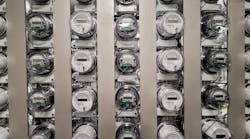The Evolving Utility Mandate
- Transforming the space. This focuses on beneficial electrification (the replacing of direct fossil fuel use with electricity to reduce emissions and energy costs) and how to facilitate and enable adoption.
- Investing in the future. A cleaner, more distributed, and more secure energy future requires companies address basic system needs.
- Uplifting communities. Organizations need to drive equitable access to clean energy opportunities, infrastructure, and benefits.
- Powering the policy. To reach a clean energy future, utilities need to support policies for 100% clean energy.
- Vendor capabilities. What current AMI systems are influenced by, in terms of network and vendors.
- Utility benchmarking. Utilities across the United States are in various stages of AMI deployment. Some have not yet deployed AMI, some are in the process of deploying, some have installed a first-generation AMI, and some are jumping right into next-generation AMI. This impacts what technologies might be readily available from vendors.
- Energy Infrastructure Modernization Act. This 2011 legislation drove the original AMI adoption in Illinois and outlines the services a utility is expected to deliver through its investments.
- Climate and Equitable Jobs Act. This 2021 legislation sets targets for clean energy technologies, like electrical vehicles (EVs), beneficial electrification, and equitable clean energy in Illinois.
- Regulatory guidance. Regulatory entities investigate AMI deployments and hesitate to approve investment without sound business cases.
- Infrastructure Investment and Jobs Act. This 2021 legislation will drive investment in core infrastructure including power and grid-related programs, broadband, water infrastructure and low and zero-emission vehicles.
Next Generation Capability
Leveraging the foundation from the AMI systems deployed throughout the 2010s, next-generation AMI (or AMI 2.0) is the next evolution of intelligent, connected utility systems that capitalizes on advanced communications, distributed intelligence, cloud services and data analytics to: better engage consumers, making them partners in the energy/water exchange; increase operational insight and visibility throughout the distribution system; deliver real-time data collection, analysis and action throughout the system — at the edge or back office as needed, or at any point in between; integrate new consumer-facing technologies like EVs and DERs; and ultimately better manage the flow of energy, water and essential services between the provider and end consumer. With a focus on peer-to-peer communications, the smart meters communicate with one another to enable things like advanced asset management and predictive analytics. Much of this technology is currently being tested to evaluate ways to make the more advanced, grid edge AMI more beneficial for customers.
Evaluating with Smart Meters
The way to do this is through a DI-enabled smart meter. This is a high-frequency sensor, analytic, and engine capable of acting on the grid edge. It has multiple channels for up to 32,000 measurements per second, can use data for value creation rather than just aggregation, can provision data to third parties or directly to the customer, and can correlate information to isolate the electrical location of grid events like power quality issues, safety problems, and outages.





